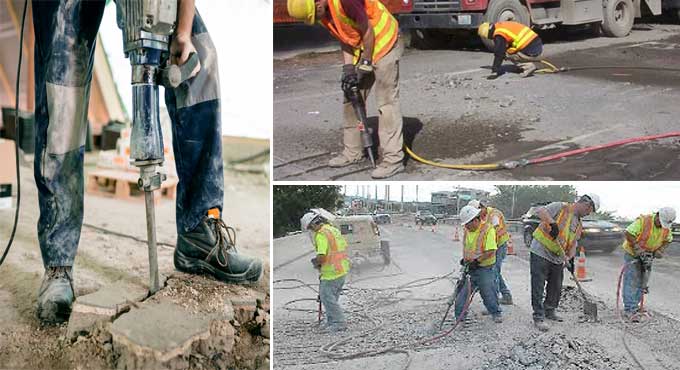
Counterintuitive Tips for Crushing Your Vibration Risks in Construction

There can be significant risks associated with vibrations generated by construction activities. Vibrations at the job site can create health and safety hazards, damage equipment, and affect product quality.
Providing safety training and protective equipment to heavy machinery workers can prevent vibration hazards. Considering these aspects can help workers avoid vibration hazards and injuries.
Types of Vibration Risks
Whole Body Vibration
Humans' legs and feet can be affected by whole-body exposure. Vibration exposure can also result in a number of symptoms including fatigue, aches, and pains in the muscles and joints, skin rashes and itching, difficulty sleeping, headaches, and irritability due to stress.
The long-term effects of some symptoms can be debilitating, even though they do not appear immediately. Therefore, workers who regularly work in vibrational environments must wear appropriate protection such as anti-vibration boots, impact gloves with thick padding, and ear protection. To prevent further injury, workers should also be aware of the symptoms of vibration exposure.
Hand Arm Vibration
Vibrations caused by power tools can eventually lead to nerve damage in the hands, arms, and shoulders of workers. Hand-arm vibration symptoms and effects include Tingling or numbness, pain in the hands, arms, shoulders, and neck, Discomfort in the hand while working due to vibration transmitted through handles and tools, Loss of grip strength, Reduction in power and control when using hand tools, such as drills, chisels, etc.
Vibration can cause Carpal Tunnel Syndrome over a long period of time. A median nerve injury at the wrist can cause numbness, weakness, and clumsiness.
Who is at Risk?
Power tools cause vibrations that pose a risk to workers in the construction industry. Most vibration accidents occur among workers who use hand-held or guided power tools. These injuries may also occur among workers who often process their work by machines.
Vibrations caused by vibrating tools over an extended period can irreversibly damage muscle and tissue within the body over time, endangering those working for extended periods with them. When you use hammers or rotary tools for more than an hour a day, you are at risk for vibration-induced injuries.
Vibration Affect on Construction Worker
Construction workers can experience a range of symptoms when exposed to excessive vibration levels. The disruption of certain body functions, including the flow of air, water, and nutrients is also harmful. With less oxygen and nutrients going to cells and tissues, there is also a risk of cell death or necrosis.
In addition to headaches and back pain, there is the possibility of developing carpal tunnel syndrome. As a result of vibration exposure at work, some workers have broken bones in their hands or feet.
Solution of Vibration Risks
Workers in the construction industry need to assess the risks posed at each job site and take actions to mitigate them if they want to reduce the risks associated with hand-arm vibration and whole-body vibration.
Using a risk assessment, you determine where risks are likely to occur, how to mitigate them, and how to inspect tools regularly. So they don't break down over time. You also train workers about safety procedures and to use safety equipment.
Wrapping it Up
Considering how prevalent vibration has become in modern workplaces, its potential hazards are particularly concerning. Vibration hazards can pose a serious threat to the health and safety of construction workers.
To learn more, watch the following video tutorial.
Video Source: Terraconconsultants
Heavy machinery must be regularly inspected and maintained if workers are working on or near it to help prevent vibration-related injuries.
Construction workers will stay safe at any job site they work on if they have the right assessment and mitigation measures in place while completing their tasks efficiently with the right tools for the job.


